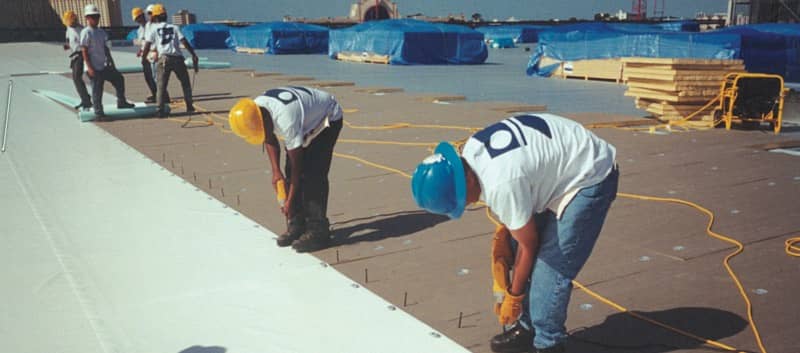 Over the life of an industrial or commercial building, it is typical that the building will be added onto or a section of the building will need to be re-roofed. Regardless of whether it’s just a building addition or a reroof project, the “tie-in” of the new roofing system to the existing roofing system is critical. “Tying-in” two roofing systems is a process that happens almost every day. However, it is frequently overlooked during the specification stage associated with choosing the new roofing system.
Over the life of an industrial or commercial building, it is typical that the building will be added onto or a section of the building will need to be re-roofed. Regardless of whether it’s just a building addition or a reroof project, the “tie-in” of the new roofing system to the existing roofing system is critical. “Tying-in” two roofing systems is a process that happens almost every day. However, it is frequently overlooked during the specification stage associated with choosing the new roofing system.
Instead, people typically scope out for a completely new roofing system which requires tearing off the old, and usually still functioning, roof. Because the focus of these projects tends to be on the ‘new’ developments, the tie-ins get lost in the fold. Tying-in roofing systems is much more economical however as well as less disruptive. While there are a variety of benefits regarding tie-ins, there are also a variety of considerations you should pay close attention to.
If handled incorrectly, tie-ins of new roof areas to existing areas can be a source of major frustration, disputes, and on-going problems. Some of the potential issues are:
- Potentially violating the Terms & Conditions of the existing roofing system’s warranty
- Trying (and failing) to tie incompatible products together
- Creating a poor (or no) solution for water drainage
- Creating a system that requires constant maintenance
- Having a “no man’s land” situation where no party wants to take responsibility for the roof
- Installing a roof that is plagued by leakage
These issues can be avoided however if the actual point(s) of contact between the roofing systems is the top focus. The tie-in(s) are critical for keeping water and other elements out of your building. Maintaining this focus usually provides some additional insights into what kind of roof the new roofing system should be. To ensure a reliable transition, you need to find out what your current roofing system is (if you don’t already know) and then contact the manufacturer. Manufacturers differ and have their own policies, processes, and construction details that would be necessary for a seamless tie-in.
There is another important reason for contacting your current roofing system manufacturer before you begin to tie-in a new roof. Even if you are using the same manufacturer for the new roof, failing to notify them could result in a nullified warranty. If the situation is addressed upfront, everything typically works out fine from a warranty perspective. There are also a number of ramifications of combining different manufacturers, so again knowing both of the roofing systems’ construction details and processes are a must.
Have you experienced and or performed a tie-in of two roofing systems? Tell us about it in the comments!
-1.png?width=500&height=271&name=FiberTite_Only%20(500px%20wide)-1.png)


-1.png)